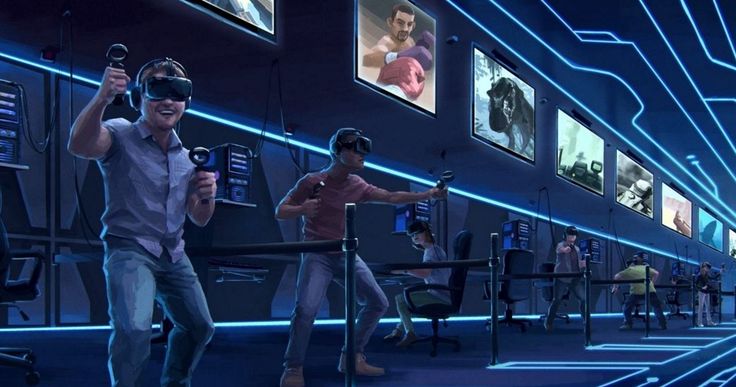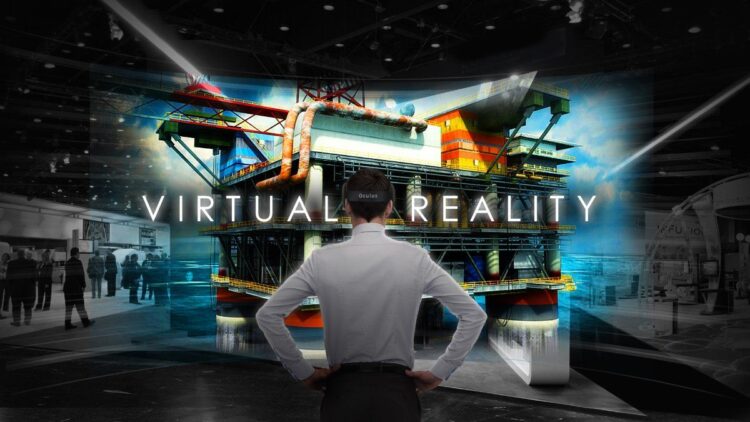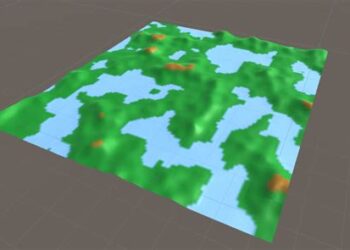For decades, video games were perceived as a form of escapism—a digital diversion designed to offer a temporary reprieve from the real world. In 2025, that perception is not just outdated; it is fundamentally incorrect. The line between the “real world” and the “virtual world” has become increasingly porous, and video games are the primary architects of this paradigm shift. They are no longer just reflecting our reality; they are actively reshaping it, creating complex new systems of social interaction, economics, and even perception itself.
This transformation is not driven by a single innovation but by a powerful convergence of technologies. From photorealistic graphics that challenge our senses to persistent online worlds that have become genuine social hubs, games are redefining what it means to experience, interact, and even exist. They have become powerful platforms for artistic expression, complex economic experiments, and groundbreaking technological advancement.
This article delves into the multifaceted ways video games are redefining reality. We will journey beyond the surface-level discussion of graphics to explore the structural, social, and psychological pillars of this revolution. We will examine the technologies blurring the sensory divide, the emergence of AI-driven worlds that feel truly alive, the creation of legitimate player-owned economies, and the profound impact these digital frontiers are having on our analog lives. This is the story of how interactive entertainment evolved from a pastime into a parallel reality.
The Visual Frontier: Erasing the Uncanny Valley
The most immediate and obvious way games challenge our reality is through their visual fidelity. The goal has always been photorealism, but for years, a subtle yet persistent “uncanny valley” kept game worlds from being truly indistinguishable from life. Today, thanks to the maturation of powerful game engines and hardware, that valley is rapidly closing.
Engines like Epic’s Unreal Engine 5—and the emerging technologies seen in its successors—have become the standard for hyper-realism. Two key innovations have been instrumental:
- Nanite Geometry: This technology allows developers to use film-quality, high-polygon assets directly in the game world without the traditional performance cost. The result is an environment with a level of detail that was previously confined to pre-rendered cinematic scenes. Every rock, brick, and leaf can possess a staggering complexity, tricking the eye into perceiving the digital as physical.
- Lumen Global Illumination: Lumen provides a fully dynamic lighting system that reacts instantly to changes in the scene. Light bounces, reflects, and refracts off surfaces just as it does in the real world. This realistic interplay of light and shadow is arguably the most crucial element in creating believable scenes, grounding fantastical worlds in a reality our brains can intuitively process.
Games released in the current landscape, such as the critically acclaimed Grand Theft Auto 6, have showcased this power on an unprecedented scale, creating urban environments so detailed and naturally lit that they are often mistaken for real footage. This leap in visual fidelity does more than just impress; it fundamentally alters the player’s level of immersion. When the visual cues of a game world perfectly mimic our own, our capacity for disbelief is suspended, making the emotional and narrative beats of the experience feel more tangible and personally resonant.
The Sensory Revolution: VR, AR, and Haptic Immersion
While screens can fool our eyes, the next frontier in redefining reality involves deceiving our other senses. Virtual Reality (VR) and Augmented Reality (AR) are no longer niche technologies; they are robust platforms leading the charge in dismantling the barrier between player and game.
Virtual Reality (VR): Modern VR headsets, now lighter, wireless, and featuring near-retinal resolution displays, offer a sense of “presence” that a flat screen cannot replicate. In a game like Half-Life: Alyx and its spiritual successors, players don’t just control a character; they inhabit one. They physically peek around corners, manually reload their weapons, and interact with objects using their own hands. This one-to-one physical interaction creates powerful muscle memory and spatial awareness within the virtual space. The brain begins to map the digital world as a real place, leading to genuine physiological reactions—the vertigo from standing on a virtual cliff, the adrenaline from a creature lunging at you.
Augmented Reality (AR): If VR replaces our reality, AR enhances it. Moving far beyond the early days of Pokémon GO, modern AR games and applications running on glasses or advanced mobile devices overlay complex, interactive digital information onto our physical world. Imagine a historical strategy game played out on your actual coffee table, or a mystery game that leaves digital clues scattered throughout your real-world neighborhood. AR recontextualizes our own environment, turning the mundane into the magical and proving that a game world doesn’t have to be a separate destination; it can be a layer on top of our own.
Haptic Feedback: The experience is further deepened by advancements in haptic technology. Full-body haptic suits, gloves, and vests can simulate a vast range of sensations—the impact of a raindrop, the recoil of a weapon, the direction of an enemy’s attack. When you can feel the virtual world, it solidifies its existence, transforming it from a visual spectacle into a tactile space.
The Social Fabric: Persistent Worlds and the Metaverse
Perhaps the most profound redefinition of reality is happening in the social sphere. Massive multiplayer online games have evolved from simple chat rooms with gameplay attached into fully-fledged digital societies. These persistent worlds, often referred to as proto-metaverses, have become legitimate “third places” for millions, supplementing or even replacing the community centers, pubs, and parks of the physical world.
Platforms like Fortnite, Roblox, and VRChat are no longer just games—they are social hubs. The gameplay is often secondary to the experience of simply existing and interacting within these spaces. Major artists hold live concerts attended by millions of avatars, movie trailers debut to captive digital audiences, and friendships and communities are forged that are as meaningful as any formed in real life.
This creates a dual identity for many, where their digital avatar and social standing in a virtual world are a significant and curated part of who they are. The actions and achievements in this reality carry real social capital, influencing relationships and self-esteem in the physical world.
The Soul of the Machine: AI-Driven Emergent Reality
For all their visual and social complexity, traditional game worlds have been fundamentally predictable. NPCs walk in loops, quests follow scripts, and the world is largely static. The integration of advanced Artificial Intelligence and Large Language Models (LLMs) is poised to be the single greatest leap toward creating truly dynamic, living digital realities. This revolution is unfolding across several key areas:
A. Truly Dynamic NPCs: Imagine conversing with a non-player character not by selecting from a list of three pre-written questions, but by using your own voice and speaking naturally. Powered by generative AI, the NPC understands your intent and responds with unique, unscripted dialogue. They remember your past interactions, have their own dynamic goals and relationships, and can provide information or gossip based on events that have actually happened in the game world. This transforms NPCs from robotic quest-givers into believable inhabitants, making the world feel truly populated.
B. AI-Generated Quests and Narratives: Instead of a single, linear story, future games will feature an AI “Dungeon Master” that creates quests and narrative arcs on the fly, tailored specifically to your actions. Did you just betray the Thieves’ Guild? The AI might generate a multi-stage revenge questline against you. Did you spend a lot of time exploring a particular forest? The AI could create a local mystery for you to solve. This allows for near-infinite replayability and a story that is uniquely yours, a reality shaped by your own choices.
C. Adaptive, Living Worlds: AI can manage the complex simulations of an entire world. An ecosystem can evolve realistically, with predator and prey populations changing based on player activity. A city’s economy can enter a recession if players consistently raid its merchant caravans. Political factions can rise and fall in power based on the quests players choose to support. The world stops being a static backdrop and becomes a living, breathing character in its own right—a reality that evolves with or without you.
D. Intelligent and Evolving Adversaries: Enemy AI is moving beyond predictable patterns. Modern AI can analyze player strategies and adapt its own tactics. It can learn your favorite hiding spots, coordinate ambushes, and exploit your weaknesses. This creates a much more challenging and engaging experience, forcing the player to constantly evolve their own approach to a threat that feels intelligent and reactive.
The Economic Revolution: True Digital Ownership

For years, the money and items you earned in a game were worthless outside of it. The rise of blockchain technology and Web3 concepts is challenging this paradigm, introducing the concept of “true digital ownership.” While the initial hype was fraught with speculation, the underlying technology is maturing to create player-owned economies that have real-world value and consequence.
This means the rare sword you find in a dungeon isn’t just a line of code on a company’s server; it’s a unique digital asset that you truly own. You can sell it to another player for real money, trade it, or even carry it over to other compatible games. This redefines the player’s relationship with the game from one of a simple consumer to a stakeholder. Hours spent playing can now generate tangible value, blurring the line between a hobby and a job. This economic reality creates powerful incentives for players to invest their time and skill, building robust economies that are designed, run, and profited by the players themselves.
Conclusion: The New Real Is Here
Video games have completed their metamorphosis. They are no longer simple entertainment products but are now complex, layered realities that command our attention, shape our social lives, and even offer new economic opportunities. The convergence of photorealistic graphics, complete sensory immersion through VR/AR, persistent social worlds, and truly intelligent AI is creating experiences that are not just like reality, but are a valid form of reality in their own right.
As this technology continues its exponential march forward, the experiences it powers will become ever more indistinguishable from our physical world. This presents both a thrilling opportunity and a profound responsibility for developers and players alike. We are at the dawn of a new era, standing at the edge of infinite, interactive, and emergent realities. We are no longer just playing games; we are learning to live inside them.













